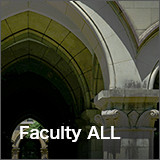- HOME
- Faculty member
- Column
Joy of research (Professor ISHIKAWA)
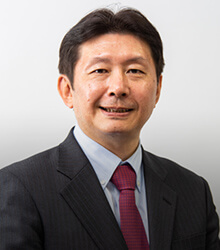
Radiation Application /
Professor
Kenichi ISHIKAWA
Paper (a) discusses the prediction by simulating the effect called the rapid increase of high-order harmonics. This was regarded as a hyperbole by world-famous experimentalists, drawing comments such as “it is impossible.” However, this effect was proven four years later by conducting an experiment at the RIKEN research lab. Paper (b) discusses this experiment. The excitement and wonderment of verifying what was predicted with theory or simulation through an experiment, as well as creating a new hypothesis (even if it is proven to be wrong later), are some of the joys of research. The prediction in paper (c) was also criticized by a theoretician who is regarded as an expert in the field. However, its content was verified recently in an experiment with a free-electron laser conducted during an international joint project with multinational participants. Paper (d) discusses this experiment. The prediction in paper (e) has not yet been verified. However, it catalyzed an international joint research project with Technische Universität Wien, Imperial College London, and the Max Born Institute. Why do light, electrons, atoms or molecules act so predictably such that equations can be used to describe their behavior? How do they know why and how to move next even though that is something difficult even for a super computer to calculate? The way a study of basic phenomena leads to applications in unexpected manners is another joy of research.
【Related Article】
(a) K. Ishikawa, Photoemission and ionization of He+ under simultaneous irradiation of fundamental laser and high-order harmonic pulses, Phys. Rev. Lett. 91, 043002 (2003).
(b) E. J. Takahashi, T. Kanai, K. L. Ishikawa, Y. Nabekawa, and K. Midorikawa, Dramatic enhancement of high-order harmonic generation, Phys. Rev. Lett. 99, 053904 (2007).
(c) K. L. Ishikawa and K. Ueda, Competition of resonant and nonresonant paths in resonance-enhanced two-photon single ionization of He by an ultrashort extreme-ultraviolet pulse, Phys. Rev. Lett. 108, 033003 (2012)
(d) R. Ma, K. Motomura, K. L. Ishikawa, et al., Photoelectron angular distributions for two-photon ionization of helium by ultrashort extreme ultraviolet free electron laser pulses, J. Phys. B(受理済み)
(e) K. L. Ishikawa and K. Midorikawa, Above-threshold double ionization of helium with attosecond intense soft x-ray pulses, Phys. Rev. A 72, 013407 (2005).
Students are in the leading role! Students are also qualified specialists (Professor Mikio SAKAI)
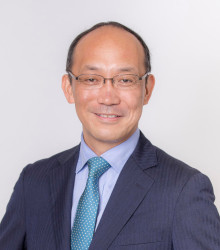
Modeling and
Simulation /
Professor
Mikio SAKAI
Sakai Laboratory is a relatively new laboratory that started in 2008. Luckily, we have been able to attract brilliant students, and so far, three of our students have received the School of Engineering Dean’s Award (the School of Engineering Dean’s Award is a prize awarded to students with outstanding research achievements). Moreover, about half of our master’s course students have progressed to the doctorate, and all the students who have gone on to doctoral study have been accepted to the Research Fellowship for Young Scientists of the Japan Society for the Promotion of Science (DC1). All the students who carried on to the doctorate course were very competent, and they were already regarded as qualified specialists.
They also actively engaged with joint research with private companies. They could see their contributions toward the improvement of Japanese technology by solving problems of industry through their skills and knowledge.
I felt it was important to leave a long-lasting result with such brilliant doctoral students. Thus, we decided to co-author a book.
I co-authored “Numerical Simulation of Powder,” which was published by Maruzen Publishing in August 2012, with two students in the doctoral course. As their supervisor, it was very gratifying and memorable to be presented with such an opportunity.
World-famous accelerator research facility MALT (Professor MATSUZAKI)
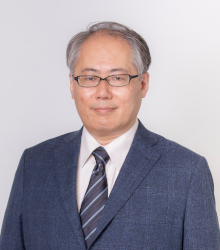
Radiation Application/
Professor
Hiroyuki MATSUZAKI
The leading research facility for accelerator mass spectrometry in Asia. In this field, it is also known as MALT and is recognized globally. We also host many international conferences. Recently, we hosted the 4th East Asia AMS Symposium in December 2011, where researchers from around the world gathered. In September 2012, I was appointed as the chairman of the AMC session of the International Mass Spectrometry Conference (IMSC2012).
Due to its nature, accelerator mass spectrometry is often involved in joint research with researchers from diverse fields. We have lively exchanges not only with researchers in engineering or geoscience but also with researchers in history or archeology.
Books/papers by the faculty
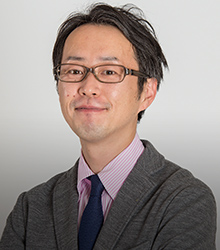
Nuclear power/
Professor
Takumi SAITO
Professor SAITO
This is an example of the research that I aimed to conduct during my master’s study that gave successful results after 10 years through experimentation and discussion with my students. Sometimes there are serendipities like this. Other times, research results are slowly obtained in parts. I believe that overcoming all constraints by your own curiosity, spirit of inquiry, and cooperation with your colleagues makes a research fruitful.
Related Article:
Saito, T., Sao, H., Ishida, K., Aoyagi, N., Kimura, T., Nagasaki, S. and Tanaka, S.: "Application of Parallel Factor Analysis for Time-Resolved Laser Fluorescence Spectroscopy: Implication for Metal Speciation Study,” Environ. Sci. Technol. 44, 5055-5060 (2010).


